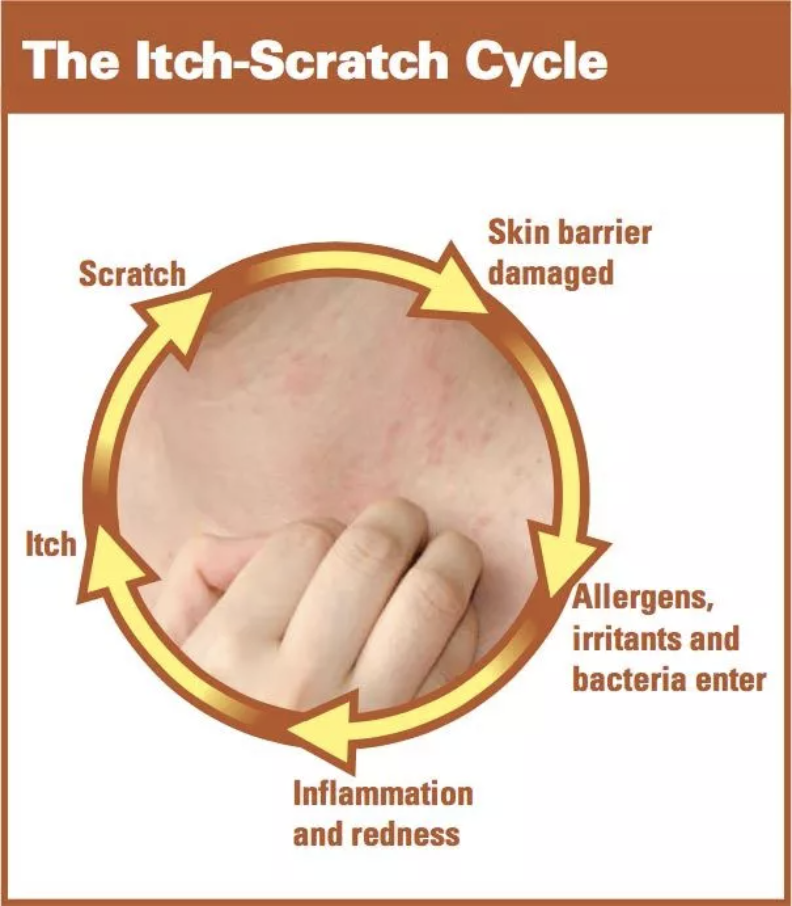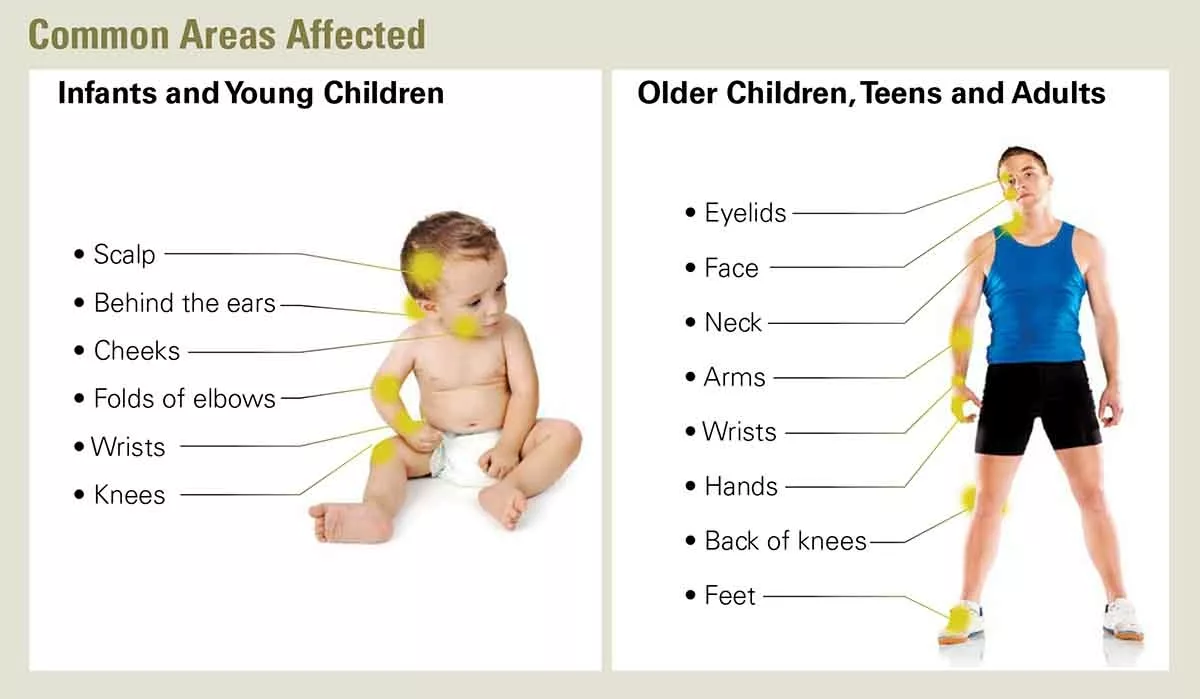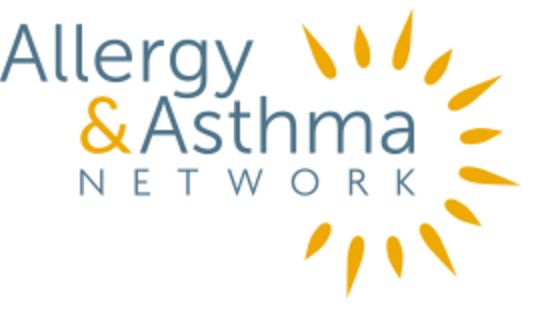Eczema is a very common skin condition. Eczema is not a single condition, but rather a grouping of several types of skin conditions, not all of which are related to each other.
How common is eczema?
 Eczema is a skin condition that affects 31.6 million people in the United States. Atopic dermatitis is the most common form of eczema; 16.5 million adults and 9.6 million children under the age of 18 have atopic dermatitis. Among children, 3.2 million have moderate-to-severe symptoms. Eczema often develops in early childhood, appearing within the first 6 months or within the first 5 years.
Eczema is a skin condition that affects 31.6 million people in the United States. Atopic dermatitis is the most common form of eczema; 16.5 million adults and 9.6 million children under the age of 18 have atopic dermatitis. Among children, 3.2 million have moderate-to-severe symptoms. Eczema often develops in early childhood, appearing within the first 6 months or within the first 5 years.
What causes eczema?
The cause of eczema is unknown, but doctors believe that it is related to genetics, an immune system that is sensitive to allergens and irritants and a defective skin barrier that allows moisture to escape and allergens and bacteria to invade. Approximately 70% of people with eczema report a family history of the condition.
Exposure to allergens and irritants start a chain reaction in the body. The immune cells release histamines, cytokines and other chemicals to get rid of the irritants. The resulting inflammation causes the skin to itch, and itch and itch.
Too much scratching can lead to infection if the surface of the skin is broken. Signs of an infection include yellowish, crusty skin (often on top of the eczema), red, swollen bumps and pus-filled blisters.
Some people with eczema may lack a specific type of protein, called filaggrin, in their skin. This protein serves as a protective barrier from allergens, irritants and infections. When filaggrin is lacking, it weakens the skin barrier function of the skin. Some people with eczema also have high blood levels of Immunoglobulin E, or IgE, which are antibodies produced by the immune system that set off allergy symptoms.
What are the different types of eczema?
There are seven different types of eczema. Each type has its own unique triggers and causes. Treatment options may vary depending on the type of eczema a person has. Let’s look at the different types of eczema.
1. Atopic dermatitis
Atopic dermatitis is a chronic inflammatory skin condition. It is the most common type of eczema. You may often see atopic dermatitis used interchangeably with eczema, even though it is only one type. It affects 16.5 million adults and 9.6 million children. Atopic dermatitis has a genetic component as it tends to run in families.
With atopic dermatitis, the immune system is easily triggered and sensitive to allergens and irritants. Many people with atopic dermatitis also have a mutation to the filaggrin gene, causing them to have a compromised skin barrier. This, along with inflammation that can damage the skin, allows for moisture to escape and allergens and bacteria to invade.
Symptoms may come and go. They include:
- Red, itchy patches of skin on light skin; dark brown, purple or ashen gray on dark skin
- Dry and scaly skin
- Areas of thickened skin
- Open, oozing, and crusty sores.
People with atopic dermatitis often also have other allergic conditions such as asthma or allergic rhinitis.
2. Dyshidrotic eczema
Dyshidrotic eczema is another common form of eczema. It causes small, itchy, fluid-filled blisters to form on the hands and feet as the result of an allergic response. It tends to run in families. Dyshidrotic eczema is seen in people with other types of eczema and it is more common in women than men. It rarely appears in children under 10.
3. Contact dermatitis
Unlike many other types of eczema, contact dermatitis doesn’t run in families. With contact dermatitis, the skin becomes irritated when it encounters an allergen or irritant.
There are two subtypes of contact dermatitis:
- Irritant contact dermatitis – this is the most common type of contact dermatitis. The skin becomes damaged due to contact with an irritant such as a cleaning product (detergent, soap), makeup or certain metals. It can also occur from the skin rubbing against scratchy clothing.
- Allergic contact dermatitis
4. Neurodermatitis
Neurodermatitis affects approximately 12% of the U.S. population. Whereas atopic dermatitis tends to be widespread across the body, neurodermatitis is normally confined to one or two patches of skin. The most common areas affected are arms, shoulders, elbows, legs, ankles, wrists, hands, back of the neck or scalp. These patches of skin can be dry, thick, scaly, leathery or different colored. They are very itchy.
Neurodermatitis is more common in women than men. Many people report the itchiness being worse when trying to relax, such as at bedtime, or during periods of high stress.
5. Nummular eczema
People with nummular eczema develop coin-shaped patches of skin that are itchy and may ooze. These areas often develop on arms, legs, hands, or torso. They itch and burn, and fluid may leak out and crust on the skin. The condition is more common in males than females. It can be seen independent from other types of eczema or at the same time.
6. Seborrheic dermatitis
Seborrheic dermatitis is a skin condition most common on the scalp. It also occurs in other areas with lots of oil gland activity. Seborrheic dermatitis is characterized by red, itchy, scaly and greasy patches of skin which produce flaking. It is commonly known as dandruff in adults and teens or cradle cap in infants.
Approximately 11% of the U.S. population has seborrheic dermatitis. It is common in people with certain medical conditions such as adult Hodgkin’s lymphoma, HIV, Down syndrome and Parkinson’s disease.
7. Stasis dermatitis
Stasis dermatitis occurs in people with poor circulation (venous insufficiency) to their lower legs. It is most common in older adults and women. Common risk factors for developing poor circulation include varicose veins, high blood pressure, obesity and heart failure.
People with stasis dermatitis often start with ankle swelling and orange-brown spots. \ It may also lead to skin color changes, itching, scaliness and dry skin.
So eczema is a versatile disease.
Each type has different causes and manifestations. It is important to work with an allergist or dermatologist (skin doctor) for treatment. Depending on your type of eczema, you may need to also work with other specialists to help treat conditions that may be contributing to your eczema.

What are common symptoms of eczema?
Eczema can come and go, but even when skin appears clear, there may be inflammation under the surface of the skin, waiting to flare.
Common signs and symptoms of eczema include:
- itching
- flaking
- cracking
- swelling
- open oozing skin
- crusting
- dry skin
- sensitive skin
Eczema often appears on the following parts of the body:
- face
- neck
- hands
- wrists
- elbows
- knees
- ankles
- feet
What are the different types of skin changes associated with eczema?
If you were to open a dermatology textbook, you would be flooded with terms used to describe skin conditions and their manifestations. While people with eczema may not need to know all the different terms used to describe eczema, it may be helpful to understand some of the more common ones. These describe the abnormalities, or skin lesions, associated with eczema.
- atrophy – a thinning of the upper layers of skin (or dermis). The thinning makes the skin more fragile and prone to tearing. Atrophy is more common as people age, but it also can be caused by use of topical steroid medications.
- erythema – traditionally described as reddening of the skin. However, in people with darker skin pigmentation, symptoms may be less obvious. There may be areas of darker, ashen gray, or purple skin.
- follicular accentuation – inflammation of the hair follicles. This may present as a rash that looks like goosebumps.
- hyperpigmentation – patches of skin that are darker in color than the surrounding skin.
- hypopigmentation – patches of skin that are lighter in color than the surrounding skin.
- lichenification – thickening of skin patches caused by chronic scratching. Lichenified skin may appear red or darker than surrounding skin.
- striae – commonly referred to as “stretch marks.” These may present as indented streaks or streaks of darker or different colored skin. Striae can also result from the use of topical steroid medications.
- telangiectasia – dilated or broken blood vessels on the surface of the skin.
- xerosis – excessively dry skin. This may cause itching, skin flaking, or cracking.
© 2021 Allergy and Asthma Network

Last updated : 2/6/2023